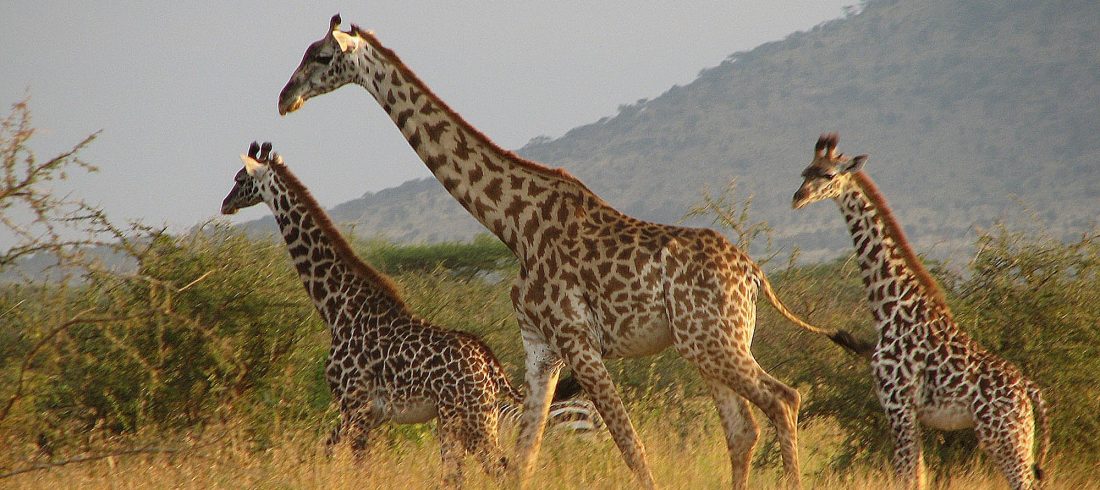
If you visit northern Tanzania and its magnificent wildlife during the dry season, Tarangire is defiantly the place to include in your safari. While the wildlife in other parks are scattered due to lack of water the dry riverbeds in Tarangire, with their underground water, will attract wild animals from hundreds of kilometres away.
Tarangire’s specialties are the tree climbing python snakes, the diversity of birds, and of course the great concentration of wildlife in the dry season.
Serengeti, Lake Manyara and Arusha National Parks, and last, but not least, the Ngorongoro Crater should be combined with your visit to Tarangire.
The fierce sun that day after day shines from the cloudless sky sucks the moisture from the landscape, baking the earth to a dusty red soil, and the withered grass as brittle as straw.
The Tarangire River has shrivelled to a shadow of its wet season self. But it is choked with wildlife. Thirsty nomads have wandered hundreds of parched kilometres knowing that here, always, there is water.
This beautiful park full of Baobab trees is located southeast of Lake Manyara around the Tarangire River.
When you visit Tarangire in the dry season, you will meet greatest concentration of wildlife outside the Serengeti ecosystem – a fiesta for predators – and the one place in Tanzania where dry-country antelope such as the stately fringe-eared oryx and peculiar long-necked gerenuk are regularly observed.
Herds of up to 300 elephants scratch the dry river bed for underground streams, while migratory wildebeest, zebra, buffalo, impala, gazelle, hartebeest and eland crowd the shrinking lagoons.
During the rainy season, the seasonal visitors scatter over a 20,000 sq km (12,500 sq miles) range until they exhaust the green plains and the river calls once more. But Tarangire’s mobs of elephants are easily encountered, wet or dry season.
The swamps, tinged green year round, are the focus for 550 bird varieties, the most breeding species in one habitat anywhere in the world.
On drier ground you find the Kori bustard, the heaviest flying bird; the stocking-thighed ostrich, the world’s largest bird; and small parties of ground hornbills blustering like turkeys.
More ardent bird-lovers might keep an eye open for screeching flocks of the dazzlingly colourful yellow-collared lovebird, and the somewhat drabber rufous-tailed weaver and ashy starling – all endemic to the dry savannah of north-central Tanzania.
Tarangire’s pythons climb trees, as do its lions and leopards, lounging in the branches where the fruit of the sausage tree disguises the twitch of a tail.
Location:
118 km (75 miles) southwest of Arusha.
How to get there:
Easy drive from Arusha or Lake Manyara following a newly surfaced road to within 7km (four miles) of the main entrance gate; can continue on to Ngorongoro Crater and the Serengeti. Charter flights from Arusha and the Serengeti, Zanzibar and Dar es Salaam.
What to do:
Guided walking safaris. Day trips to Maasai and Barabaig villages, as well as to the hundreds of ancient rock paintings in the vicinity of Kolo on the Dodoma Road.
When to go:
Year round but dry season (June – September) for the sheer numbers of animals.
Accommodation:
Several camp sites in and around the park.